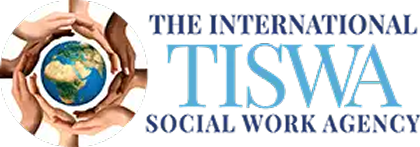
Liaison with Local Safeguarding Services
4. Guidance for Local Monitoring and Referral
TISWA provides a list of recommended areas for attention during the first 3–6 months post-placement.
This may include:
-
Emotional regulation and attachment behaviours
-
Sleep, toileting, eating patterns
-
Developmental milestones or regression
-
Indicators of placement stress or breakdown
-
Suggestions for accessing:
-
Child mental health services
-
School-based pastoral support
-
Parenting support programmes
-
Language or cultural identity integration resources
Carers may also be encouraged to self-refer to services with TISWA’s guidance on how to navigate local systems.
Benefits
-
Encourages timely safeguarding involvement in the receiving country, avoiding delayed or reactive responses
-
Strengthens professional accountability, ensuring that the placement is not left unsupported post-order
-
Bridges language and system gaps, helping local professionals understand UK context and safeguarding expectations
-
Promotes joined up working between UK and international teams, especially where child protection concerns may re-emerge
-
Supports schools and paediatricians to respond proactively to trauma-related behaviours
-
Reduces isolation for overseas carers, by clarifying who to turn to and when.
.jpg)
Liaison with Local Safeguarding Services – Post Placement
What It Includes
1. Comprehensive Case Briefing Document
A professionally structured summary for local agencies in the receiving country, provided in English and translated where necessary.
Includes:
-
Overview of child’s legal journey (type of order, date granted, referring UK authority)
-
Summary of the completed international assessment
-
Identified strengths and vulnerabilities (health, attachment, behaviour, development)
-
Recommendations for early support and monitoring
-
Specific cultural, developmental, or safeguarding considerations (e.g. trauma history, identity needs, prior neglect)
This document can be tailored for professionals unfamiliar with UK care or legal systems, offering clarity and continuity.
.png)

2. Contact and Liaison with Receiving Safeguarding Team
TISWA will initiate and coordinate contact with the relevant local child protection or family welfare service in the receiving country.
This may include:
-
National or regional safeguarding agency
-
Local municipality-based child welfare office
-
Accredited NGO or voluntary sector safeguarding partner (if state service is absent)
-
Polish Family Court or child guidance centre (for Polish placements, for example)
Where appropriate, TISWA may facilitate a joint virtual meeting with UK and overseas professionals.
3. Briefing to Early Years Settings / Schools / Health Professionals
If the child is entering nursery, school, or receiving regular medical care, TISWA can offer a short, family-approved professional briefing.
This ensures:
-
The education or health setting understands the child’s background, potential triggers, and cultural transition
-
Awareness of emotional and behavioural signals that may emerge
-
Preparedness to refer or adapt support based on early observations
This briefing is delivered via email or secure video and summarised in a written info sheet for professionals.
